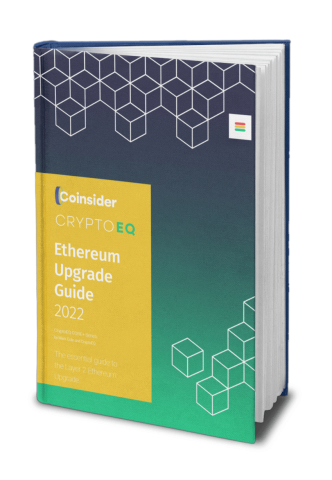Crypto is complex. We make it simple.
Ethereum Upgrade Guide 2022
Crypto is complex.
We make it simple.
CORE+ Research

Ethereum is amid a multi-year upgrade to satisfy future global demand while also improving security and decentralization. This is your guide for the first part of the upgrade and what we can expect in the near future from Ethereum and the ecosystem.
There's been a lot of misconceptions surrounding Ethereum's upgrade over the last year. They even dropped the Eth2.0 title officially in their road map. It's clear that the upcoming changes are going to change the way we interact with the network entirely. As a layer-2 scaling solution, optimistic rollups (ORUs) seem to be capitalizing on their first-mover advantage. While theoretically faster and more efficient than ORUs, zk-rollups (ZKRUs) suffer from friction and compatibility issues when migrating smart contracts to layer 2. The question is: can ORUs establish enough of a presence while the market waits for ZKRUs to be fully rolled-out?
Key Takeaways
What is "the merge?"
The Merge is the term used for when Ethereum switches from proof-of-work (PoW) to a proof-of-stake (PoS) blockchain. Slated for Q2 2022, the merge will bring many benefits that were not previously possible with PoW.
Sharding
Sharding is the partitioning of a database or blockchain into smaller subsections. Rather than building layers atop one another (e.g., L2s or Bitcoin’s Lightning Network), sharding scales horizontally—adding more nodes without improving performance—a hierarchy or layered-structure solution. Doing so does not create more burden for the average user.
Sidechains
Sidechains are separate, Ethereum-compatible blockchains. Sidechains can be independent EVM-compatible blockchains, but more likely, they are application-specific blockchains catering to Ethereum users and use cases like Polygon or Ronin.
Rollups
Rollups enable exponential scalability gains without sacrificing security. The primary innovation of rollups is that they move computation off-chain while storing only the bare minimum of transaction data on-chain. There are two primary types of rollups: zk-rollups (ZKRU) and optimistic rollups (ORU).
Optimistic Rollups
Optimistic Rollups (ORU) are simply smart contracts on mainnet Ethereum with some number of transactions batches—"optimistically" validated—into one string of data (rollup), and posted back to the mainnet. Only a small data portion is registered on L1 and most of the computation is handled off-chain, meaning fees can be significantly reduced.
Download the PDF to read the full Report
Download